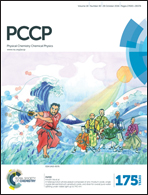Abstract
Using a low energy electron (LEE) as a catalyst, the electronic origin of the catalytic strategies corresponding to substrate selectivity, reaction specificity and reaction rate enhancement is investigated for a reversible unimolecular elementary reaction. An electronic energy complementarity between the catalyst and the substrate molecule is the origin of substrate selectivity and reaction specificity. The electronic energy complementarity is induced by tuning the electronic energy of the catalyst. The energy complementarity maximizes the binding forces between the catalyst and the molecule. Consequently, a new electronically metastable high-energy reactant state and a corresponding new low barrier reaction path are resonantly created for a specific reaction of the substrate through the formation of a catalyst-substrate transient adduct. The LEE catalysis also reveals a fundamental structure-energy correspondence in the formation of the catalyst-substrate transient adduct. Since the energy complementarities corresponding to the substrate molecules of the forward and the backward steps of the reversible reactions are not the same due to their structural differences, the LEE catalyst exhibits a unique one-way catalytic strategy, i.e., the LEE catalyst favors the reversible reaction more effectively in one direction. A characteristic stronger binding of the catalyst to the transition state of the reaction than in the initial reactant state and the final product state is the molecular origin of barrier lowering.


 Please wait while we load your content...
Please wait while we load your content...